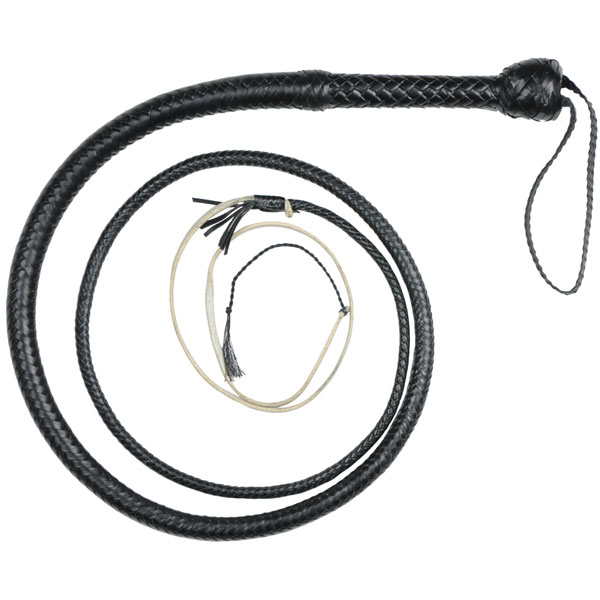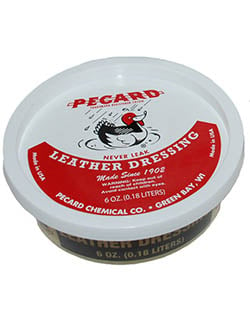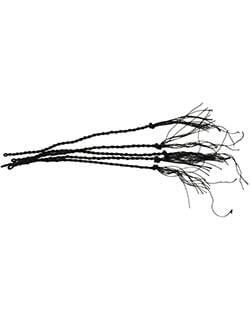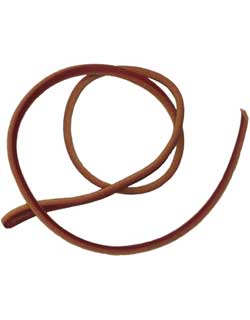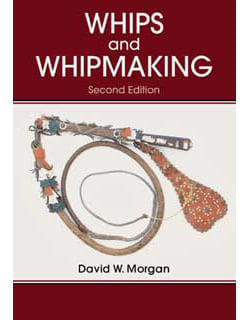Bullwhip, 6 ft., Black
Our own production bullwhip is a moderately heavy whip with the weight carried out well into the thong. The butt foundation is about 8 inches long. The whip is well balanced and has a 12 plait kangaroo overlay. The 6 foot length is measured from the butt to the end of the braid, not including the fall. Hand crafted at David Morgan. A whip maintenance kit is supplied with this whip, consisting of a spare fall, 5 crackers and a 6 oz. tub of Pecard Leather Dressing, with directions for fall and cracker replacement.
Do you live outside the US? Due to strict US export regulations, we are only able to ship kangaroo leather products outside the US by adhering to the US Fish and Wildlife Service export inspection procedures.
Our own production bullwhip is a moderately heavy whip with the weight carried out well into the thong. The butt foundation is about 8 inches long. The whip is well balanced and has a 12 plait kangaroo overlay. The 6 foot length is measured from the butt to the end of the braid, not including the fall. Hand crafted at David Morgan. A whip maintenance kit is supplied with this whip, consisting of a spare fall, 5 crackers and a 6 oz. tub of Pecard Leather Dressing, with directions for fall and cracker replacement.
Do you live outside the US? Due to strict US export regulations, we are only able to ship kangaroo leather products outside the US by adhering to the US Fish and Wildlife Service export inspection procedures.
-
Care
Good whips, properly used and maintained, should give long service. Physical damage such as hitting on sharp objects, gravel, concrete etc., being jammed in doors or truck tailgates, or chewed by dogs or poddy calves, obviously will destroy a whip quickly. Care in three other aspects will help you gain the most from your braided leather whip.
1. Dirt and sand embedded in the whip will cause internal wear. Dirt can be washed out with warm soapy water, the whip dried (without heat) and then given a heavy coat of leather dressing.
2. Using the whip with excessive force, as in seeking the loudest possible crack, will cause early breakage of falls and stretch the thong, so altering the taper. The usual and preferred crack is that attained with minimum force. A strong wrist action will over-stress the keeper on a stock whip or the junction of thong to butt section on a bullwhip, and will cause early failure. Normal use of these whips should employ very little wrist force.
3. Leather dressing is important. A dry whip loses its strength, and one with the wrong dressing may lose strength and/or stretch out of shape. Do not dress a whip with tallow, neatsfoot oil, or any light oils. We recommend Pecard Leather Dressing. Whips to be stored should be kept in light cool conditions, and given a thin coat of Pecard Dressing every six months. Whips in use may be dressed somewhat more often. Whips used in hot, dry, or dusty conditions, and whips used in the wet, may need frequent dressing. Falls on whips last better if kept well dressed at all times.
For more information on care and maintenance, please refer to our Care of Whips page.
